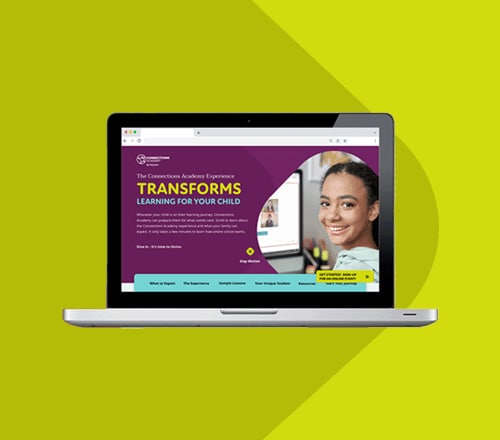How to Help Your High School Student be a More Active Learner
byKristina Cappetta
4 min to read
Becoming better acquainted with engagement strategies for high school students is a great way to get your student on the path to becoming an active learner. With active learning, students are asked to engage in the learning process rather than be a passive consumer of it. A student who is an active learner thinks deeply about various concepts and isn’t afraid to ask questions.
As your student’s Learning Coach, you can help get them on the right path to becoming a successful active learner through these helpful strategies and engaging activities for high school students.
Learning Engagement Strategies for High School Students
Student engagement in high school focuses on students learning to take the lead instead of relying on their teachers or parents to guide their schedule, goals, and priorities. You can provide the tools to help them make this happen and become more independent and active learners. Here are some helpful tips to share with them:
Encourage Students to Summarize New Concepts
When learning new concepts, students should summarize them by using a note-taking format that works best for them. Learning how to take notes effectively does not always come easy for everyone, but once they discover how to summarize the content they learned in class and rewrite the core concepts from that lesson in their own words, they are on their way to successfully taking a more active role in their learning. By engaging directly with the material after the fact through studying or notetaking, they are better able to draw conclusions on their own or discover aspects of the lesson where they may need more help.
Ask Students to Define New Words
If you’d like to know how to engage high school students and help them become more active learners, be sure they are defining key vocabulary words they do not know. Many online lessons will provide a helpful glossary for most subjects. This allows students to refer to the definitions while reading each lesson so that they can understand the terms being used.
As they add the word and meaning to their notes, they can go back to see if they understand the word in the context of what they are learning. By reviewing the definitions and having them easily accessible as they read, they can better see the terms in context.
Help Students Self-Assess Their Work
One vital way students can become active learners is to self-assess their own understanding of what they have learned. When reading passages, students can take advantage of any questions that may appear after a lesson. As they try to answer them, they can check the answer guide to see if they are correct. They should then add the questions and the answers to their notes so that they can use them to study later.
When it comes to math lessons, they can complete practice problems and then check their answers. If they are wrong, they can re-work the problem to see if they can get the correct answer. Taking the time to assess their work by asking themselves questions challenges their understanding directly, encouraging them to take a more active role in their own learning. This practice also helps them assess whether or not they need additional help from their teacher or if they need to hire a tutor.
Help Students Add Visual Elements
If your student is more of a visual learner, suggest they add visual elements to their study sessions. There are lots of engagement strategies for high school students that can help visual learners, which can include productive doodling while taking notes, drawing out a map that connects themes in their literature homework, or even gamifying their goals. Whatever they do, by adding visual elements to their learning process, they have the chance to further engage with the material and become a more active learner.

Active Learning Activities for High School Students
Besides implementing strategies, finding engaging activities for high school students can also help them to become more active learners. Here are some activities you can introduce to your student:
Add Music
Adding music to lessons can help material come to life, making it more interesting for students to engage with. Research has shown that information set to music is easier to remember. You can suggest that your student make up songs to remember content or search for songs online that can help in the process.
Role-Playing
Role-playing is among the active learning activities for high school students that can help them become more engaged. Your student can pretend to be a figure they are learning about or act out a scene in a story. This provides a high level of student engagement because it puts them right in the middle of what they are learning.
Go on a Virtual Field Trip
Virtual field trips are a great activity to make lessons more exciting. By seeing what they are studying, students are often better able to relate to the material. Virtual field trips often include watching video walkthroughs of museums, lectures from experts, and even video chats with curators and researchers.
Challenge Their Understanding with Trivia
If you are looking for active learning games for high school students, trivia is one you may want to try. Test their knowledge of what they’ve learned by setting up a trivia game. Rather than asking them to repeat memorized facts, encourage them to answer by asking them to explain how they came to their answers, taking learning to the next level.
As your high school student’s Learning Coach, you can introduce engagement strategies and activities to help them become more active learners.



